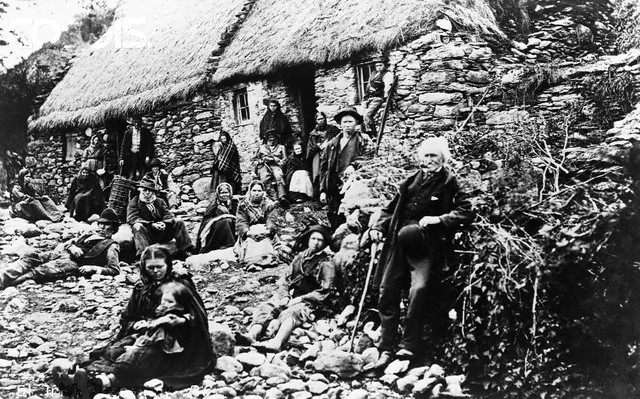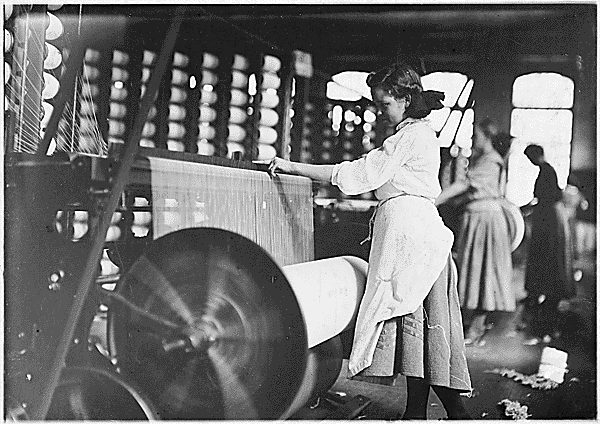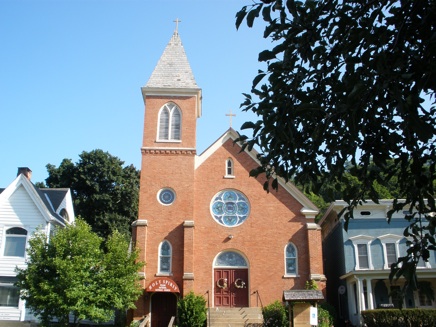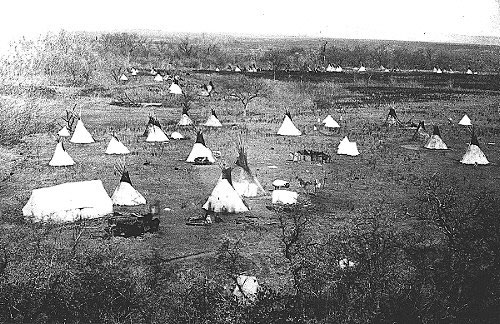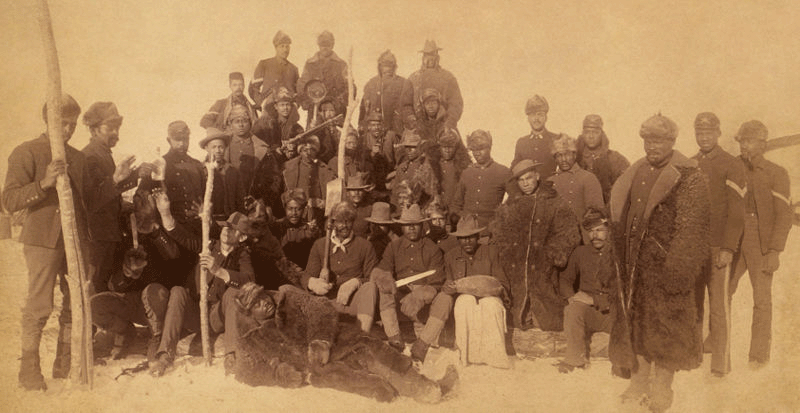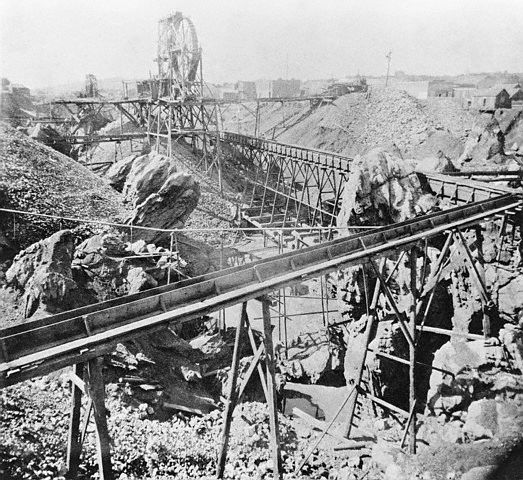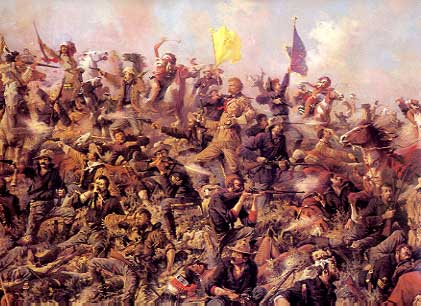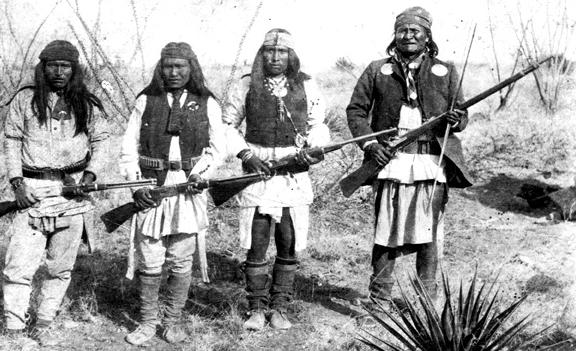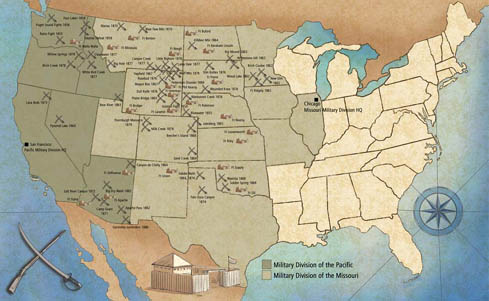I) Pullman
A) George Pullman – made his fortune hauling Chicago out of the muck; after the Great Fire of 1871, efforts were made to raise the remaining buildings as much of the swamp that the city was built on was filled. Pullman used this money to establish a company to build sleeping cars used on long trips by railroad companies.
B) Town of Pullman – as the company grew, Pullman became concerned about the effect the radicals in Chicago were having upon his workers, so several miles south of the city he built a town (housing, stores, public buildings, a hotel he named after his daughter Florence, even churches) which he rented to workers, but which he retained title.
1) “Model” town – Pullman the town was a great example of welfare capitalism—that is, subsidizing certain amenities for workers so they remain satisfied on the job.
2) Depression of 1893 – the economic depression of 1893 cut deeply into the profits of the Pullman Company, and Pullman responded by cutting wages and laying off workers, as any good capitalist would do.
(a) Pullman rents – Pullman refused to cut rents in the same manner, however, since that division of the business had to show a profit as well.
(b) Pullman workers respond by going on strike in the spring of 1894.
C) Eugene V. Debs – a former officer of the Brotherhood of Railway Firemen, Debs in early 1894 became president of an early industrial union for railway workers, the American Railway Union
1) Railway “Brotherhoods” – each specialty in the railroad industry had its own union, The Brotherhood of Railway Engineers, Brakemen, Conductors, Firemen; problems arose when railway companies settled with one of the brotherhoods, and they crossed the picket line while others were still on strike. The ARU is meant to be a solution to this problem.
2) 1894 ARU convention – was held in Chicago; a delegation of workers from Pullman, who plead for the assistance of the ARU. Despite Debs opposition, convention delegates vote to assist Pullman workers, and vote to boycott all trains with Pullman cars. Despite the fact that the ARU represents a relatively small number of workers, traffic all over the country is interrupted.
3) Government response – because there was little violence accompanying the strike the federal government was hamstrung; with a sympathetic John Peter Altgeld as Illinois governor, there was little chance that federal aid would be requested.
(a) Richard Olney – the AG for the federal government was a railroad attorney, and it was he who suggested attaching Pullman cars to mail trains (interfering with the mail is, of course, a federal offense).
(b) Troops from Fort Sheridan (and the Dakotas) are called in “to keep the peace,” which allowed the strike to be broken.
(c) Debs and other union leaders were arrested and held incommunicado, which also helped break the strike; Debs spent a year in jail in Woodstock, Illinois, which he spent reading socialist tracts; he becomes the Socialist Party candidate for president in 1900, 1904, 1908, and 1912, when he polled the largest number of votes to that time in history for a third party candidate.
II. Roosevelt and Washington Politics
A. On the Stump for McKinley--whole Theodore Roosevelt has a well-deserved reputation as a reformer, he was first and foremost a Republican Party partisan, and willingly went out on the stump to prove it.
1. William Jennings Bryan--gained the1896 Democratic Party nomination largely on the strength of his "Cross of Gold" speech (reproduced in the YouTube clip above). Although Roosevelt was closer to Bryan's position on a number of issues than to McKinley, he played the good political soldier and went out to harrangue the crowds about the danger of class warfare that Bryan's election posed.
2. McKinley's fundraising--the fear that the specter of a Bryan election posed for the business interests in the country posed made Mark Hanna's fundraising problem easily overcome; the "businesman's tax" provided the McKinley campaign with more than $3 million, while Bryan's campaign could only raise $300,000. The election became a forgone conclusion.
B. Undersecretary of the Navy--as a political reward for his work on the McKinley campaign, Roosevelt was given the post of Undersecretary of the Navy.
1. Alfred Thayer Mahan--the leading naval theorist of his time, Mahan argued that a nation could only achieve foreign policy success by building a strong navy. To achieve this objective, the nation would also have to obtain places for its large fleet to refuel--"coaling stations"--with the reliance upon steam for locomotion. This became the one of the excuses for the aggressive imperialism that became manifested in the foreign policy of the United States in the years just before the turn of the century.
2. Imperialist foreign policy--in many ways, 1890 is a pivotal year. In that year, the Census Department determined that the frontier in the United States had ceased to exist. By 1892, the historian Frederick Jackson Turner had developed a theory that the frontier had been the determining factor in the development of democracy in the United States. That same year, Homer Plessy was arrested in New Orleans for violating the new segregated railroad car law in Louisiana; by 1896, the Supreme Court would institute the doctrine of "separate but equal," instituting legal segregation. Worries about having room to expand met racist presumptions about the ability of non-white peoples of the earth to govern themselves in this new imperialist foreign policy.
III. Cuba Libre!
A. The "Yellow" Press--the birth of the modern newspaper in the years just before the turn of the 20th century led many of the papers to promote lurid, sensationalist stories in an attempt to sell more newspapers.
1. William Randolph Hearst
B. Remember the Maine
1. The USS Maine--in response to perceived "Spanish aggression," the USS Maine was dispatched to Havana Harbor to "show the flag." On the night of February 15,1898 the Maine suffered a catastrophic explosion, which an investigating committee concluded could only have happened from a mine placed in the harbor (modern evidence points to spontaneous combustion in a coal bin). As a result, pressure to declare war on Spain grows irresistible. When McKinley asks Congress to declare war (the Constitutional method of doing so, by the way), Roosevelt resigns his position in the administration to join the Rough Riders he had been busy organizing.
1. Cuban rebels--had been fighting Spanish forces off and on for the previous thirty years, and at this point had nearly worn Spain into submission before the Americans even began their short voyage. Rebel forces, in fact, held off Spanish forces during the American invasion, which is the main reason why the American forces landed unscathed.
C. The Rough Riders--is really a manifestation of the multi-culturalism that Roosevelt learned from his association with Jacob Riis. The Rough Riders were a mixture of blue blood friends from New York (who made up much of the officer corps), with cowboys, Indians, Mexicans, and a smattering of other ethnic groups--with one important exception--who all brought the "barbarian virtues" that Roosevelt felt Anglo-Saxons had lost.
C. The Charge up Kettle Hill--this engagement, like the whole War With Spain, was a FUBAR mess. It took weeks to transport troops to Cuba, supplies were inadequate--as were preparations, medical attention, and just about everything else about the operation.
1. The Role of the10th Cavalry--under the command of General John J. Pershing, the all African American 10th Cavalry actually bore much of the brunt of the fighting for both Kettle Hill and San Juan Hill. Their bravery under fire was remarked on by a number of officers, including initially one Lt. Colonel Theodore Roosevelt. The 10th Cavalry did not have a personal war correspondent, however, so none of them were awarded a Medal of Honor
I) Mexican Revolution
A) Border raids
1) Two Mexican governments – one in the north (led by Poncho Villa), and one in the south
2) Anti-American sentiment – many people in Mexico resented the United States interference in political affairs previously in Mexico, as well as the way many of their relatives and former countrymen were being treated in the Southwest.
3) Unstable business environment – for US businesses, anyway; fear of intervention by British or German forces which would conflict with US business interests.
(a) Petroleum
(b) Mining – particularly silver, lead, and copper mines
B) Intervention – invoking the Monroe Doctrine, used as justification to interfere in affairs of Mexico.
1) Tampico Affair – avenging US honor, or the humiliation of Mexico? US sailors arrested, then quickly released with apology from Mexican government; naval commander insists Mexican officials salute US flag, which they refuse to do; Marines and sailors occupy Veracruz by force.
2) Pursuit of Poncho Villa – Villa, looking to provoke US invasion, Villa’s forces raid Columbus, New Mexico, burn it to the ground, and kill sixteen US citizens; Wilson responds by sending Gen. John Pershing into Mexico to pursue Villa; Pershing is unable to capture Villa or his forces, however, and US forces are withdrawn, quietly, a year later (to be transported across the Atlantic).
C) “Dollar Diplomacy” – interventions on the part of US government to protect the interests of American businesses, began in 1909 with personal appeal from Taft to Chinese leaders on behalf of US businesses; with Wilson, this “diplomacy” often took the force of arms
1) Nicaragua
2) Haiti
3) Dominican Republic
4) Maj. Gen. Smedley D. Butler, USMC
II) War in Europe
A) Hyphenated Americans
1) German-Americans – number 8.25 million of German parentage
2) Irish-Americans – 4.5 Million of Irish parentage
(a) Both groups either expressed opposition for English war aims (Irish), or support for German war aims (German-Americans)
(b) Why support Allies? – Cultural affinity with Great Britain by politicians; the fact that Great Britain controlled US access to information about the war, so US only heard about “Hun atrocities.”
B) “Preparedness” v. anti-militarism – US had long held suspicion of large standing army, and of militarism, but this was in the process of changing.
1) Preparedness advocates
(a) Theodore Roosevelt – felt the military was the great democratic leveler (unless you were black and relegated to a segregated unit), and would restore masculinity that was sorely lacking, particularly in the middle class (desk jobs)
2) Anti-militarists
(a) William Jennings Bryan
(b) Women’s Peace Party (40,000 members)
(c) Most Progressives
(d) Socialist Party
(e) IWW – latter two believed that this was a capitalist war, fought to control overseas colonies (and largely, it was)
1. Convincing the American People--the Wilson administration had to put a great deal of effort to sell the war to the American people, both with propaganda and with severe punishment for speaking against the war effort.
a. Government propaganda--the US government had to sell the war to the people when the "preparedness" contingent became more vociferous after the sinking of the Lusitania and the loss of American lives.
b.German bumbling--Germany mad a series of rather bumbling attempts to keep the Unites States neutral or to at least keep the country from providing substantial aid to the Allies. These attempts ranged from the purchase of the New York World by German investors to aid the spread of German propaganda to the destruction of the Toms River Arsenal in New Jersey, which shattered windows in skyscrapers across the river in New York City. Espionage efforts by the German government were fairly easily uncovered by the US government, and eventually led to the largest portion of the American people supporting the war effort of the government.
2. Preparedness--a number of influential Americans--most prominently, Theodore Roosevelt--called for the United States' government to make greater efforts to prepare for the war than the government was then engaged in--or, indeed, than a majority of the people of the United States were willing to engage in. Much of Roosevelt's frustration was the realization that what he advocated was profoundly out of step with what most Americans wanted--and Woodrow Wilson was in step with the desires.
D. Peace and the National Interest--many other Americans saw the threat of war being contrary to the national interest--particularly those Americans who would be asked to fight it.
1. Socialists--argued that the war in Europe was being fought to line the pockets of capitalists, and to further their economic interests. Socialists argued that instead, workers should refuse to kill other workers in this war.
a. Eugene Victor Debs--Debs had won over 900,000 votes in the presidential election in 1912, the most ever for the party to that time. Debs was an outspoken critic of the war, and continued to be so until he was arrested in Canton, Ohio for making the above speech.
b. Debs, William D. Haywood, other socialist (and IWW members) were arrested, tried, and convicted of sedition--of speaking out against the war
E. Feminism and Peace--women were very involved in the peace movement; many women (among them Jane Addams) argued that the role that women played in society--the nurturing mother--made women suited for maintaining peace in the world.
1. Rosika (Rosa) Schwimmer--Hungarian feminist and peace activist, who helped to found the Women's Peace Party with Jane Addams. Schwimmer was able to persuade Henry Ford to put up the money to pull together the first international conference, where she proposed that the women offer their services for continuous arbitration.
2. Addams' Role--Jane Addams, because of her prominence in the American political scene, was elected to head up this new organization--a role that she was very good at, and a position that she held for most of the next two decades.
D. Why the Peace Movement Fails--the Peace Movement in the United States failed because of the inept actions of the German government, the success of the British government propaganda, and the shift in support among the majority of American people
1. Government take action--the United States government, in response to the subtle shift in public opinion over the cause of war, passed repressive legislation to be used against those who spoke out against the war; indeed, the government quashed all dissident political movements, arresting and jailing members of these organizations. "Foreigners" were deported to their home countries, as a matter of fact.
F) Wilson’s position – shifting, depending upon the political climate
1) 1915 – recommends military build-up
2) 1916 – switches positions, promising to keep US from entangling alliances, because that position is more politically popular, and there was an election coming up.
3) Peace tied to US economic expansion--the United States manufacturing industries were able to sell much of their production to Europe, because of the strictures the state of was had placed on European manufacturers. In addition, US bankers became the financiers of the war effort in Europe, particularly for France and Great Britain, and their financial interest would be best served by a victory by the Triple Entente.
G. Economic Effects of War on US
1) 1914 recession – US securities were held abroad and cashed in for gold, which depleted reserves; between $2.5 and $6 billion worth of US securities were dumped in the fall of 1914.
2) 1915 boom – with orders for war materials from Europe, US business booming; also, with immigration from Europe cut off, workers seeing wages rise for first time after a series of recessions; however, wages do not keep pace with inflation which soon hits the economy.
(a) Wall Street Journal – praised war’s “tendency toward conservatism” in financial matters.
H) Effect of Total War in Europe on US
1) British blockade – Most of German fleet was locked up in ports along the Baltic Sea due to British blockade and naval superiority.
(a) Contraband – anything enroute to German ports was seized as contraband by British war ships, and transported to British ports.
2) German U-Boats (Unterseebooten)
(a) War ship inferiority – German navy smaller, had to rely upon U-Boats as equalizer.
(b) SS Lusitania – British passenger liner, which German u-boat sank; suspected of ferrying small arms; of the 1200 passengers killed when it sank were 124 Americans (May 7, 1915)
(i) Bryan, greatest voice for peace in Administration, resigns post over Administration handling of Lusitania, which leaves hawks in control.
(ii) Germany agrees to give warning to passenger boats in the future before torpedoing
(c) German peace proposal – demands cessation of Belgium Congo, as well as other colonies; rejected by Allies.
I. Russian Revolution (1917)
1) Socialist revolution – overthrew czar, support for entering the war on the side of the Allies was gained from Russian Jews, Poles, and Scandinavian immigrants, who had feared policies of czarist policies.
2) Allied war effort – in trouble; French leader Aristide Briand’s government falls; Britain forced to use conscription (and considers conscripting the Irish)
3) Germany resumes unrestricted submarine warfare – in the spring of 1917

























